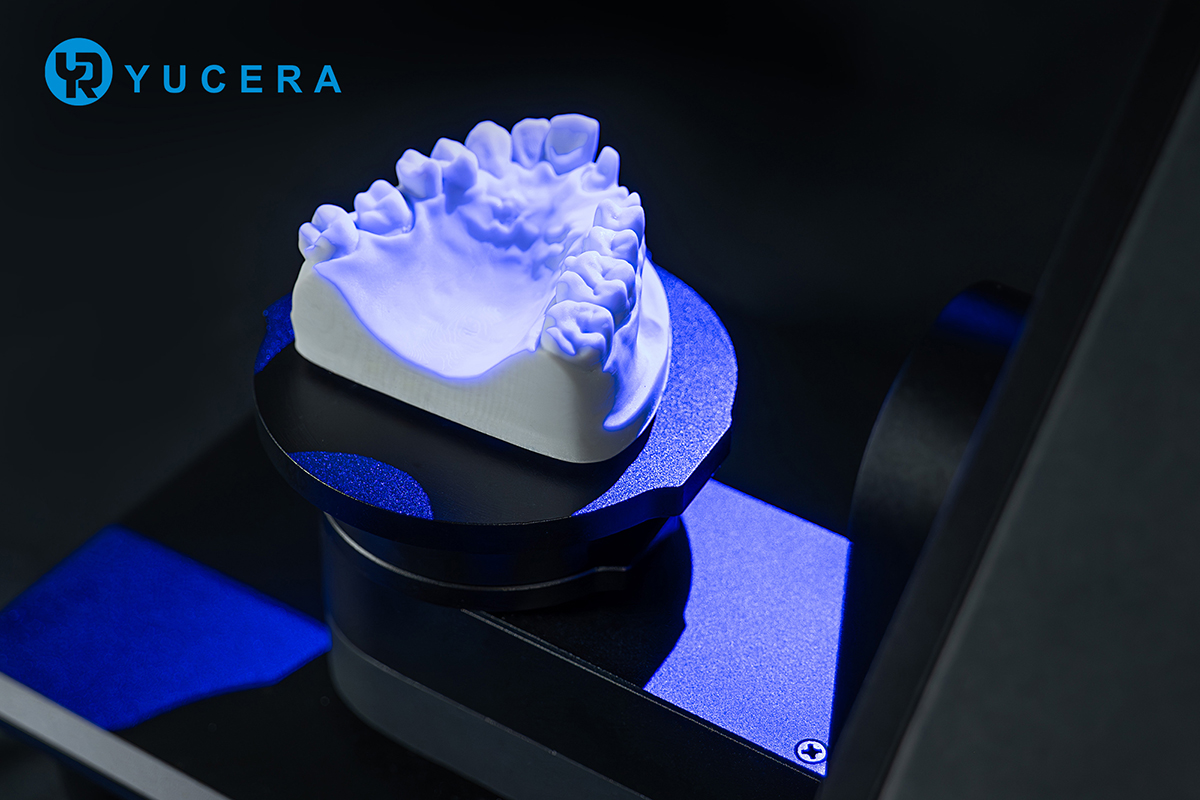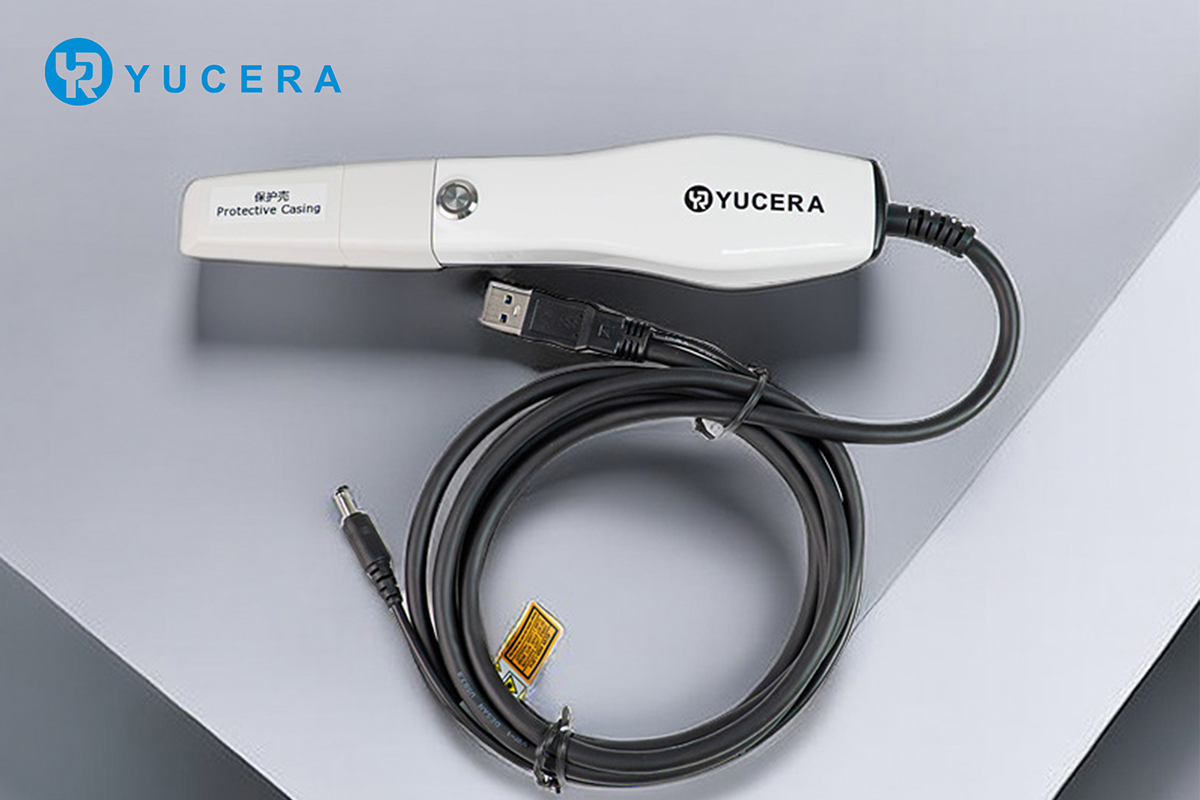Types and Pricing of Dental Milling Machines
2024-10-26
2024-10-24
Oral 3D data is the foundation and premise of digital dentistry, and the ease of use and accuracy of data acquisition equipment is very important to dental clinics. At present, oral 3D data acquisition technology can meet the diagnostic and surgical design needs of various clinical specialities in dentistry (including prosthodontics, orthodontics, oral implantation, endodontics, paediatric dentistry and oral and maxillofacial surgery, etc.).
01 Dental Maxillofacial Model Scanning Technology
Maxillofacial model scanning, also known as ‘vault scanning’, represents one of the earliest and most precise (up to 5μm accuracy) three-dimensional data acquisition technologies in dentistry. It is extensively utilized in dental laboratories for scanning plaster models or impressions. Both the upper and lower maxillofacial models require appropriate personalized occlusion relationships, which are essential for digital oral diagnosis and treatment. This scanning is a crucial foundational requirement and a necessary prerequisite for oral diagnosis and therapy. Typically, three-dimensional data registration technology can be used to achieve the occlusion relationship of the upper and lower dental models, with some scanners equipped with specialized occlusion scanning aids. The scanning data of maxillofacial models is usually in STL format, and instrument calibration should be performed after transportation or long-term storage.

02 Intraoral 3D scanning technology
Intraoral 3D scanning, also known as ‘mouth scanning’, this technology greatly improves the clinical operation process of the oral cavity, is the most convenient technology for obtaining 3D data, which can improve clinical efficiency, promote the application of oral digital technology, and realize the oral diagnosis and treatment without physical models, and the accuracy can reach up to 20 μm at present, and can realize the scanning of colour data, which can provide data support for further dental colour matching. The current accuracy can reach 20μm, and colour data can be scanned to provide data support for further tooth colourimetry. The scanning data format can be STL, or colour data format PLY or OBJ. Through 3D data registration, a digital model of the occlusal relationship can be established. Some mouth scanners also have the function of scanning 3D data of small jaw movement, which can be used to design restorations based on dynamic occlusal data, reducing the difficulty and time of clinical adjustment. There are also some mouth scanners with oral health diagnostic functions.

03 Facial 3D Scanning Technology
Oral and facial 3D data are important diagnostic and therapeutic information for patients. With the continuous development of digital technology, facial 3D data scanning (also known as ‘3D facial scanning’) has gradually become a regular clinical application of dental technology, which provides richer data support for clinical diagnosis and digital design of treatment plans related to the morphology of the oral and facial parts of the oral cavity (e.g., orthodontics, orthoprosthetics, and complete dentures, etc.). The current 3D facial scanning technology can also support colour data and is divided into fixed scanning and chairside scanning, with scanning speeds ranging from 0.8s to a few minutes, and an accuracy of about 0.2 mm. Dynamic 3D facial scanning technology (also known as ‘four-dimensional facial scanning’), which can provide clinically available 3D data of the face with a rich variety of facial expressions, can help to achieve a more all-rounded of oral diagnosis and treatment plan design.
04 Cone Beam CT (CBCT) Technology
The popularity and application of CBCT technology provides options for dental clinics to obtain three-dimensional body data (internal data) of jaws, joints and roots, no longer relying on the technology of large-scale spiral CT equipment, which provides richer data support for the diagnosis of oral implantation, orthodontics, periodontics and other outpatient dental specialities, with an accuracy (resolution) of 200μm and the standard data format of DICOM.Based on CBCT, various kinds of technologies derived from data (e.g. head shadow measurement, AI segmentation, trayless transparent orthodontic design and integrated management of multi-source data, etc.) are available for the dental clinics to use. Based on CBCT data, various technologies (such as cephalometric measurement, AI segmentation, implant programme design, bracketless transparent orthodontic treatment design and integrated management of oral multi-source data, etc.) provide more and more auxiliary support for the clinic. Dental technicians also need to learn to master the knowledge and software related to DICOM data. CBCT data technology enables dental diagnosis and treatment to fully enter the three-dimensional era!
05 Mandibular movement trajectory recording and analysing technology
Early mandibular movement trajectory recording and analysing instruments were mainly used for clinical diagnosis, with many accessories and cumbersome operation, which made the patient's experience poor. The new generation of mandibular movement trajectory recording and analysis technology (also known as ‘electronic arch’ in colloquial language) is compact, lightweight and easy to operate, provides rich diagnostic and analysis software functions, and can be integrated with CAD software for oral prosthetics, which is expected to make the fully adjustable maxillary frame become a routine clinical operation, and provide a new technical solution for the reconstruction of the oral occlusion and the diagnosis and treatment of joint diseases. It provides a new technical solution for occlusal reconstruction and joint disease diagnosis and treatment. Further, the patient's three-dimensional mandibular trajectory data can be used to directly carry out the design of oral restorations and occlusal adjustment, which is as close as possible to the patient's real occlusal situation. In addition, some of the intraoral scanners can also record a small range of mandibular movement data, which can be used for diagnostic analysis of dynamic occlusion and occlusal design. On the basis of the static ‘virtual patient’ data made from the aforementioned oral multi-source 3D data by alignment and integration, and then integrated with the patient's individual real mandibular movement trajectory data (coordinate system unification), a real dynamic ‘virtual patient’ will be formed, which can be simulated to the maximum extent by the digital form of the simulated patient in vitro. This will form a real dynamic ‘virtual patient’, which can simulate the patient to the maximum extent in digital form in vitro, providing a more comprehensive data base for comprehensive diagnosis and analysis as well as the design of oral treatment plan.
06 Other specialised scanning techniques
In addition to the above, there are a number of other specialised 3D scanning technologies, such as the Toothless Implant Direct method scanning technology. The Toothless Implant Direct Method Scanner adopts stereoscopic photography technology, which can directly obtain accurate multiple implant position information outside the mouth at one time, simplifying the cumbersome process of taking impressions from the traditional hand-operated windowing splints and greatly improving the efficiency and accuracy of clinical operations, reducing the reliance on clinical experience, and to a certain extent, reducing the technical sensitivity of clinical operations. In summary, a variety of oral medicine three-dimensional scanning technology to obtain oral multi-source three-dimensional data (teeth and jaws, jaws, face, etc.), the alignment (registration) integration can form a full information of the ‘virtual patient’, for the realization of a more comprehensive diagnosis, implantation, prosthetics, maxillofacial surgery and orthodontic and other digital treatment programme design. At present, in terms of dental model scanning, intraoral 3D scanning, facial 3D scanning and CBCT scanning, the scanning accuracy and function realisation of domestic scanning equipments can fully satisfy the needs of dental clinics and technical rooms, but there is no domestic mandibular movement track recording equipment on the market yet, which is yet to be a breakthrough.
Click to learn more: /equipment/RS300/